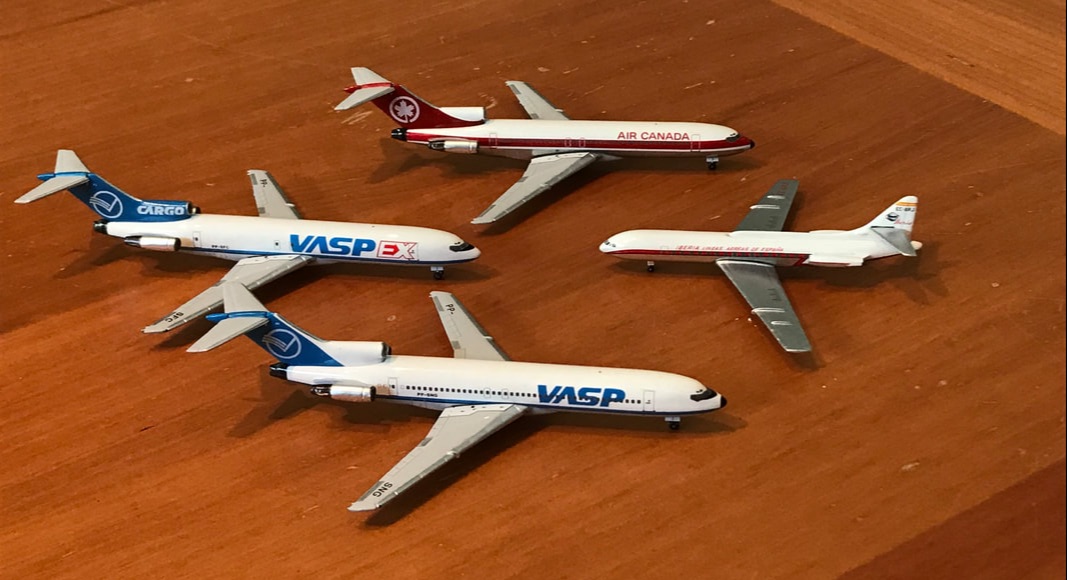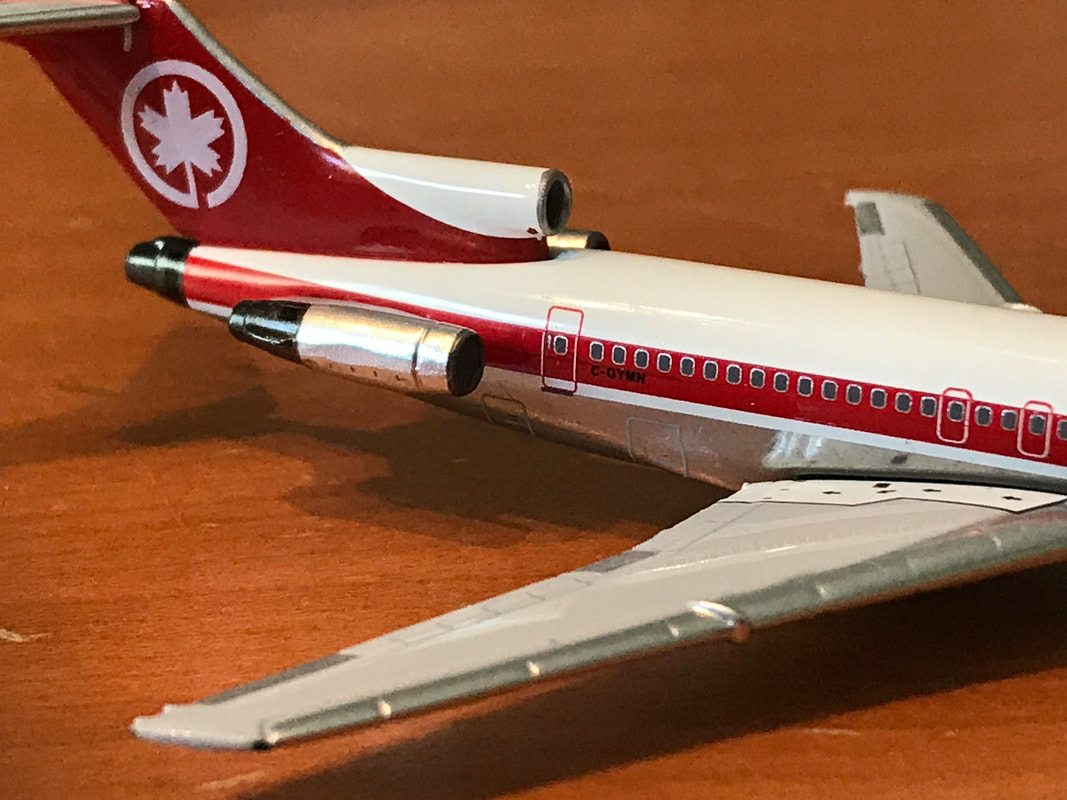I've been looking into some new airlines to focus on to fleet build. As I continue my venture into the world of pre-year 2000 aircraft and airlines, the pair of Brazilian VASP 727s was a great way to kick off a new fleet. The Air Canada 727 (at first glance) was an obvious selection to join my Air Canada fleet, and the same can be said about the Iberian Caravelle, the first of this type in my collection.
Between 1977 and 2005 VASP operated 13 Boeing 727-200s. This particular aircraft (PP-SNG) is line number 1673. Delivered new, it served with VASP from 1980 until around 1989 when she joined the Alaska Airlines fleet. It would finish serving in a passenger configuration with Sun Country in 1993, and then was retrofitted for cargo duty with Capital Cargo in 2000. This is probably the best out the four I've aded this month as it pertains to overall finishing quality, but that's where the positive portion of the review ends. From what I can tell this aircraft is supposed to have a bare metal belly. The model is also missing the Brazilian flag and Aeroclassics has missed that several windows should be blanked out. Finally, the bold 'VASP' titles are situated too far back on the fuselage. Somehow though, the model remains attractive, and it will stay in the collection until the day a better version is made. For more details and discussion on the issues, see this DAC thread. It's twin, PP-SFC easily comes in second. The attractive VASP livery translates well into Cargo form. Aeroclassics catches this aircraft in her best days as a Brazilian freighter. One final note on this pair is that they are both without the typical coroguard applied to the wings. Disappointing. Air Cananda 727-200: C-GYMN (C-YGNM?) Aeroclassics has been rather adept at providing unintentioanl fantasy models lately. At first glance, the Air Canada from this month looks good, and it's a great offering for those who missed out on the 2010 issue. Except, it is true that the registration is wrong. After that admission, the rest of the model isn't half bad. The nose and flightdeck area seem pretty good. The gears are properly fitted and the wings which pop into the fuselage are almost level, but not quite. The tail stabs are nice and parallel to the ground and all other physical mould components are good. The paint and printing is where there are issues. From 5 ft. away, things look good, but once the model is in hand, it struggles. This model, like the VASP 727s is also missing the over wing coroguard and even more frustratingly, has chipped paint around the number 2 engine. (I don't understand how R&D was able to give this aircraft the proper bare metal belly and missed the VASPs). For the time being, this will be a place holder in my growing Air Canada collection, but I will be in search of replacing this fantasy model with an actual example of 2010's C-GAAG. Iberia SUD Se-210 Caravelle: EC-ARJ I'm sure many classic fans are glad to see the return of a fan favorite mould in the Aeroclassics 1/400 Caravelle. I personal have never owned one until this month. I honestly liked the look of all three that were offered, but I usually go about collecting 'new to me moulds' conservatively. As I do focus on fleet building, Iberia is one of my concentrated groups, and most of what I own is in the most notable 1992-2013 livery. So, taking a look at the three available airlines offered, this was the easy choice. I've thought for a while about how to both tackle my disappointment in what I received, versus, how much I actually enjoy this little Caravelle. My biggest issue is that the model is near perfect aside from a terrible dent/chip right on the nose as it pertains to the finished product. I have to say, I adore the mould. I'm aware of the complexities of the different types of Caravelles all being crammed onto this mould over the different releases it has seen. That, combined with my general ignorance about the Caravelle means that I really don't have many reasons not to like the model. But Aeroclassics shoot themselves in the foot by sending me a product that was damaged. The nicest details on the model however are the good construction, the find printing and the vibrant colors. While belly isn't bare metal like some have wondered and worried about, it is painted with an acceptable metallic paint that doesn't look bad. This model certainly won't put me off of looking for more Caravelles, but the quality control certainly will. Conclusion: From the point of view of this collector, April was a rough month for Aeroclassics. Delayed models, old moulds, and issues with every single model means that I will, once again, return to an ultra conservative mode when considering purchases. I can never argue that there isn't effort being put in monthly as the selection is fantastic. That seems to be where the brilliance ends. In the world 45-50 dollar models, these mistakes are pricing me out of collecting certain brands as trends develop. I think that hardest pill to swallow this month though, even beyond the massive chip on the nose of the Iberian Caravelle, is that all three 727s have issues, some significant. The 727 is one of my favorite aircraft, and while I won't be giving up the three try-jets from April right away, I don't foresee any of them staying in my collection permanently.
0 Comments
Leave a Reply. |
The Latest...As we complete reviews of the diecast products that make it into the collection, a summary and quick link will be shared here. Each review is the sole opinion of Diecast Curio and is in no way affiliated with any company or product. Archives
March 2022
Categories
All
|
Proudly powered by Weebly











